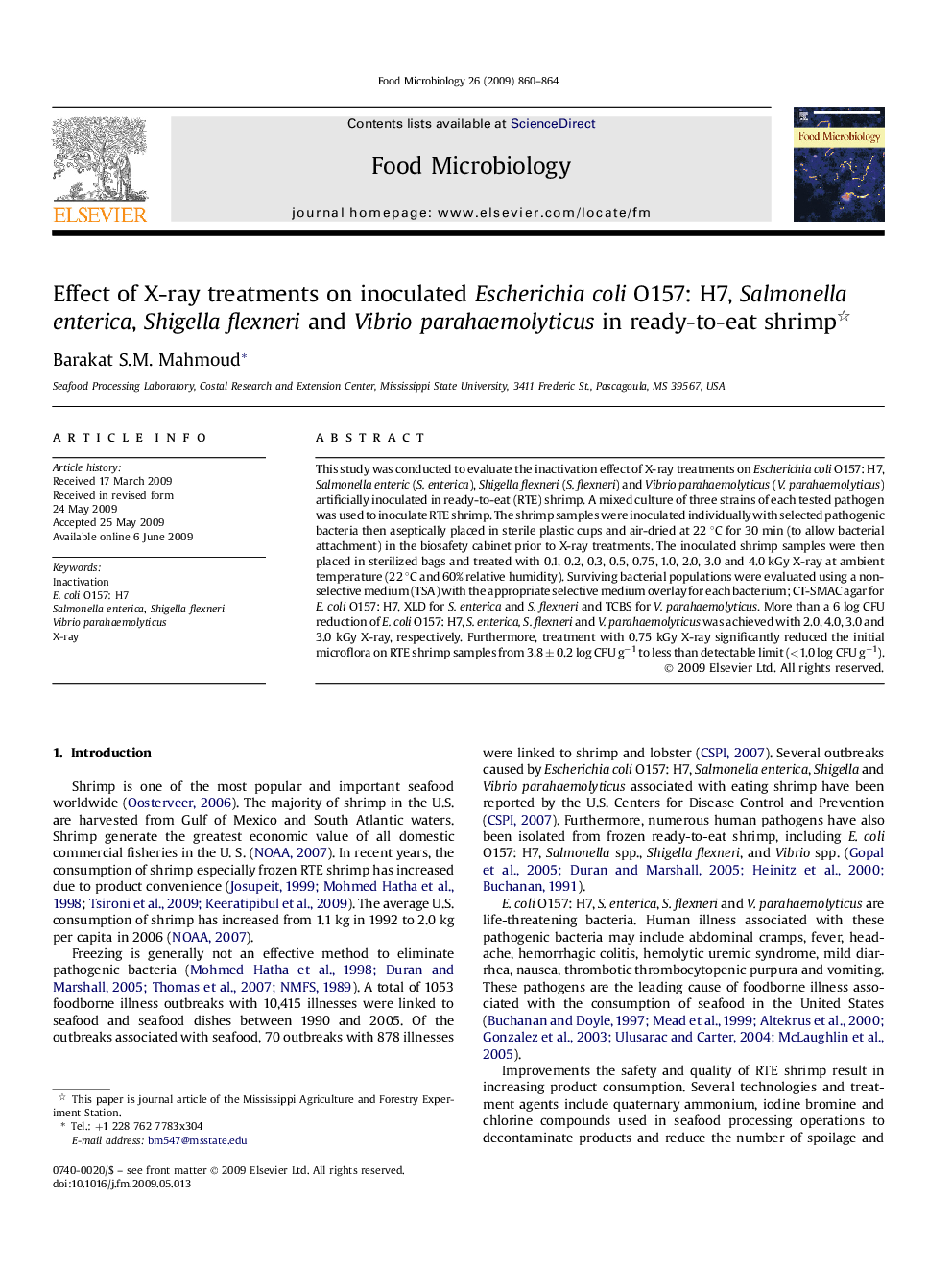| Article ID | Journal | Published Year | Pages | File Type |
|---|---|---|---|---|
| 4363497 | Food Microbiology | 2009 | 5 Pages |
Abstract
This study was conducted to evaluate the inactivation effect of X-ray treatments on Escherichia coli O157: H7, Salmonella enteric (S. enterica), Shigella flexneri (S. flexneri) and Vibrio parahaemolyticus (V. parahaemolyticus) artificially inoculated in ready-to-eat (RTE) shrimp. A mixed culture of three strains of each tested pathogen was used to inoculate RTE shrimp. The shrimp samples were inoculated individually with selected pathogenic bacteria then aseptically placed in sterile plastic cups and air-dried at 22 °C for 30 min (to allow bacterial attachment) in the biosafety cabinet prior to X-ray treatments. The inoculated shrimp samples were then placed in sterilized bags and treated with 0.1, 0.2, 0.3, 0.5, 0.75, 1.0, 2.0, 3.0 and 4.0 kGy X-ray at ambient temperature (22 °C and 60% relative humidity). Surviving bacterial populations were evaluated using a non-selective medium (TSA) with the appropriate selective medium overlay for each bacterium; CT-SMAC agar for E. coli O157: H7, XLD for S. enterica and S. flexneri and TCBS for V. parahaemolyticus. More than a 6 log CFU reduction of E. coli O157: H7, S. enterica, S. flexneri and V. parahaemolyticus was achieved with 2.0, 4.0, 3.0 and 3.0 kGy X-ray, respectively. Furthermore, treatment with 0.75 kGy X-ray significantly reduced the initial microflora on RTE shrimp samples from 3.8 ± 0.2 log CFU gâ1 to less than detectable limit (<1.0 log CFU gâ1).
Related Topics
Life Sciences
Agricultural and Biological Sciences
Food Science
Authors
Barakat S.M. Mahmoud,
